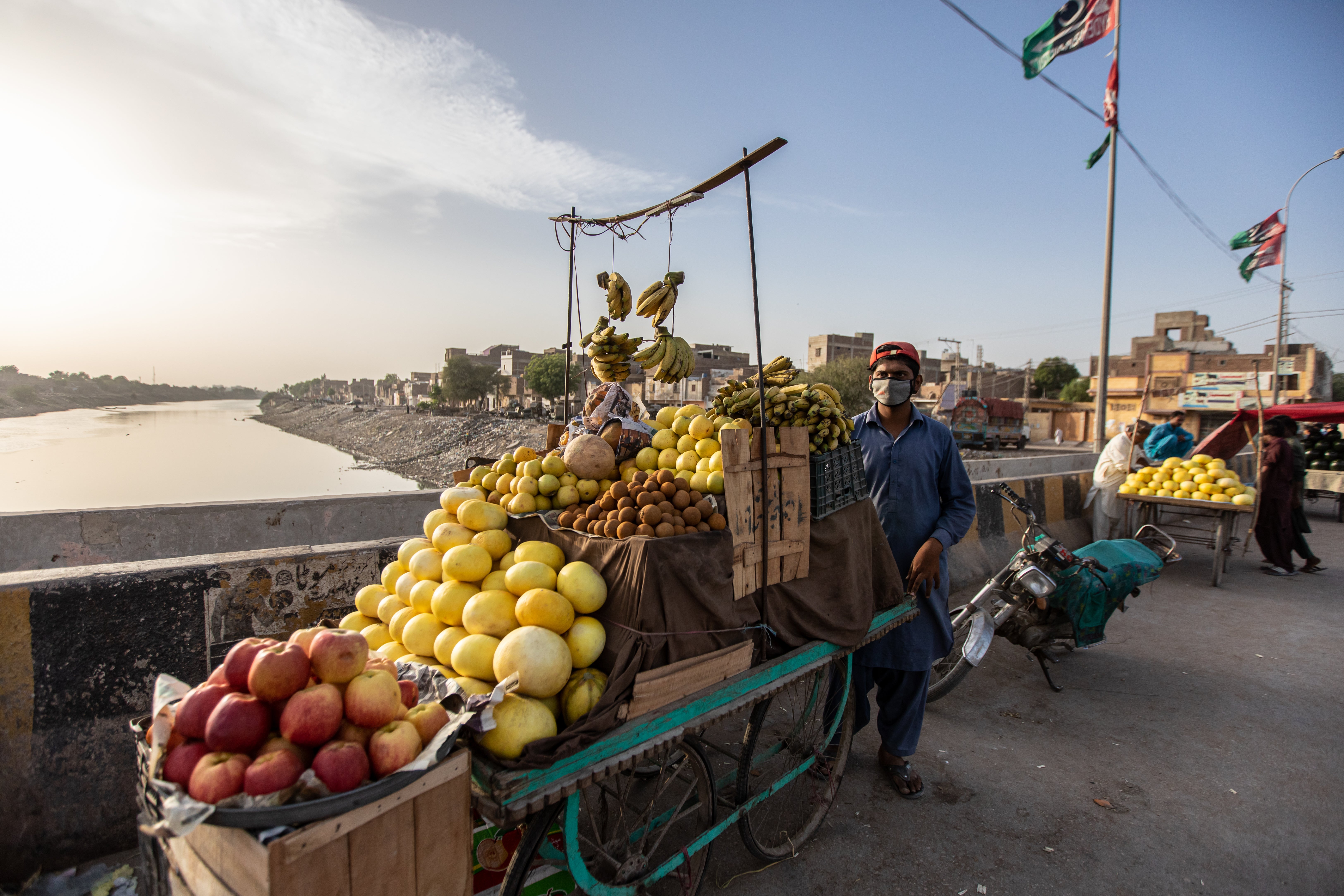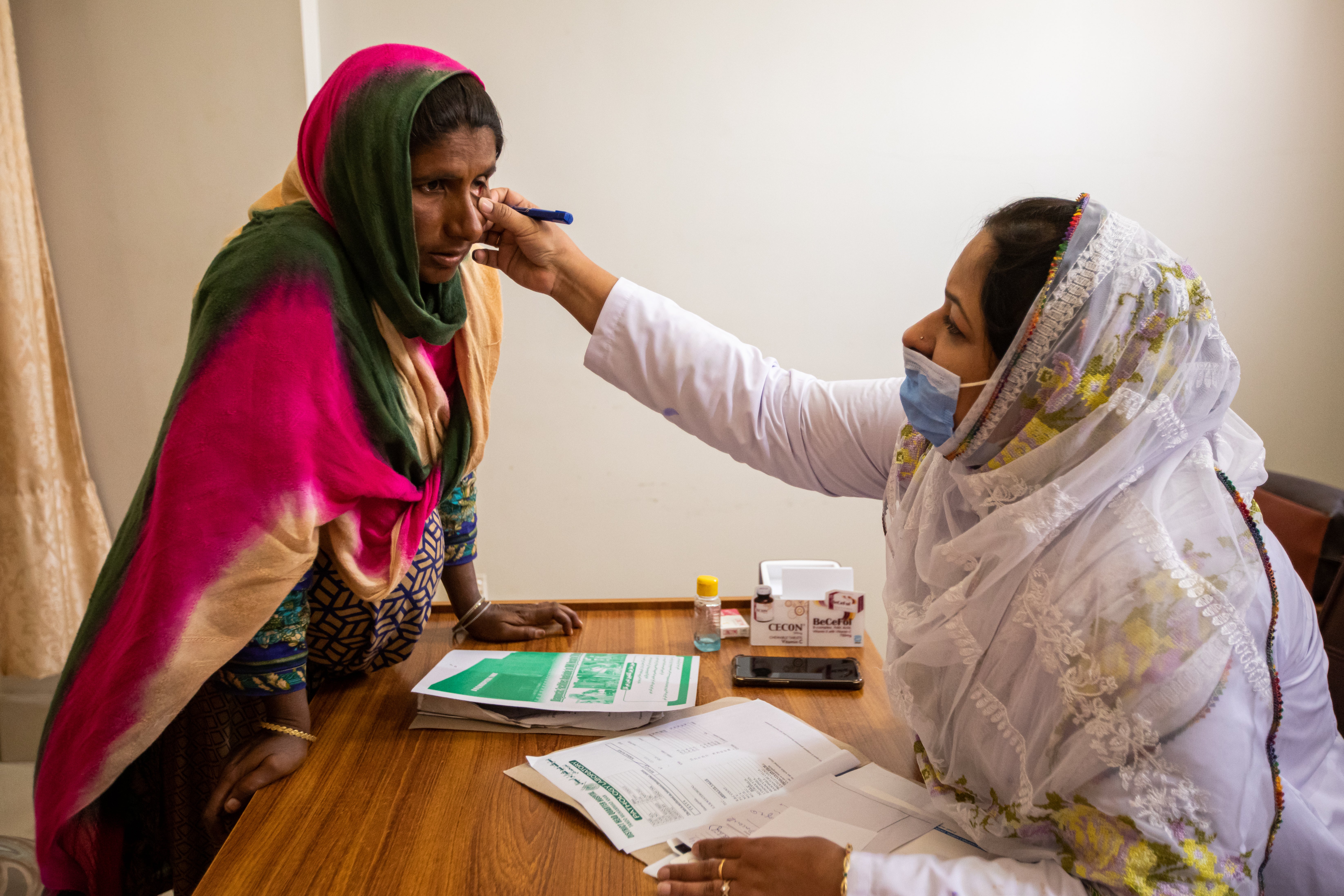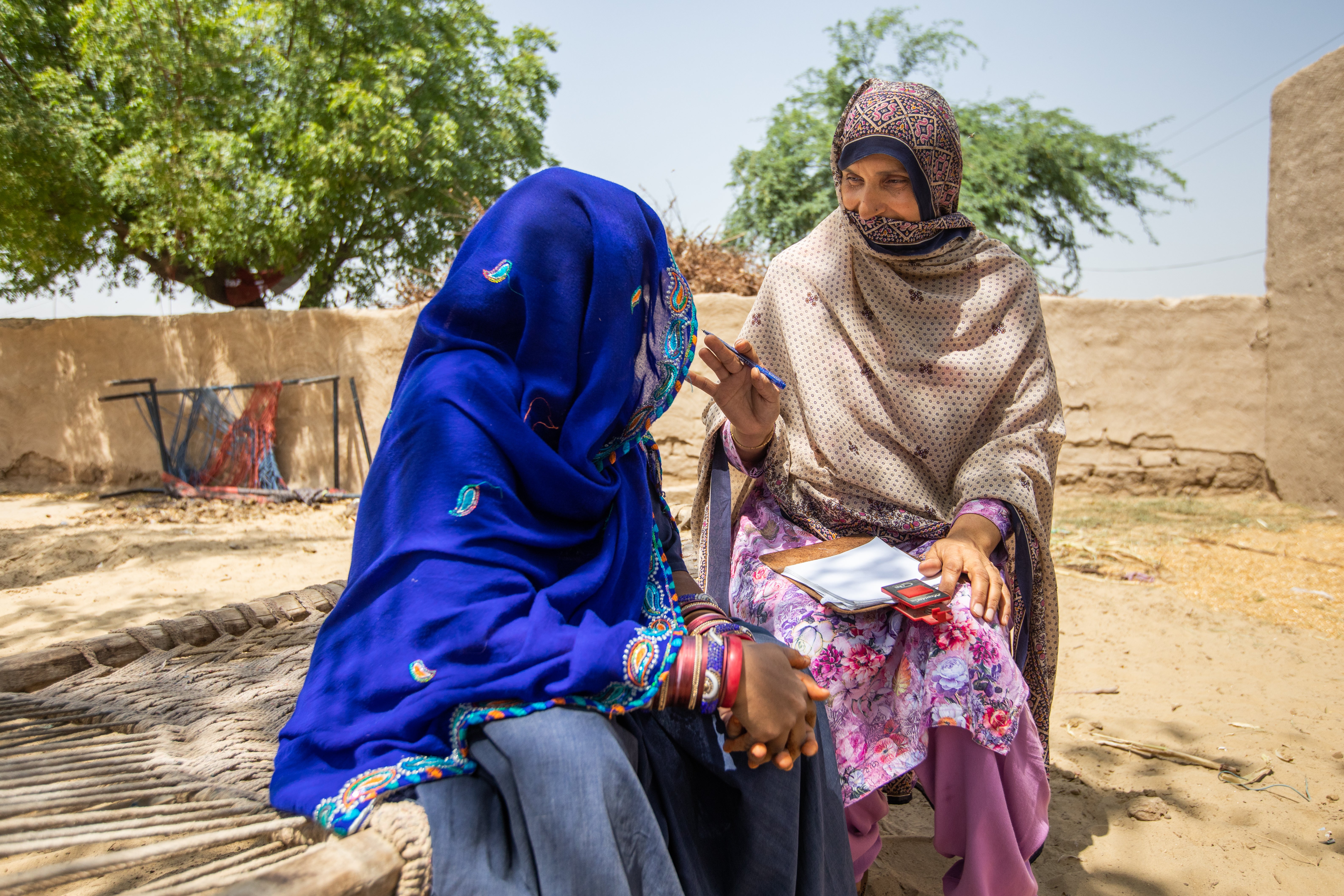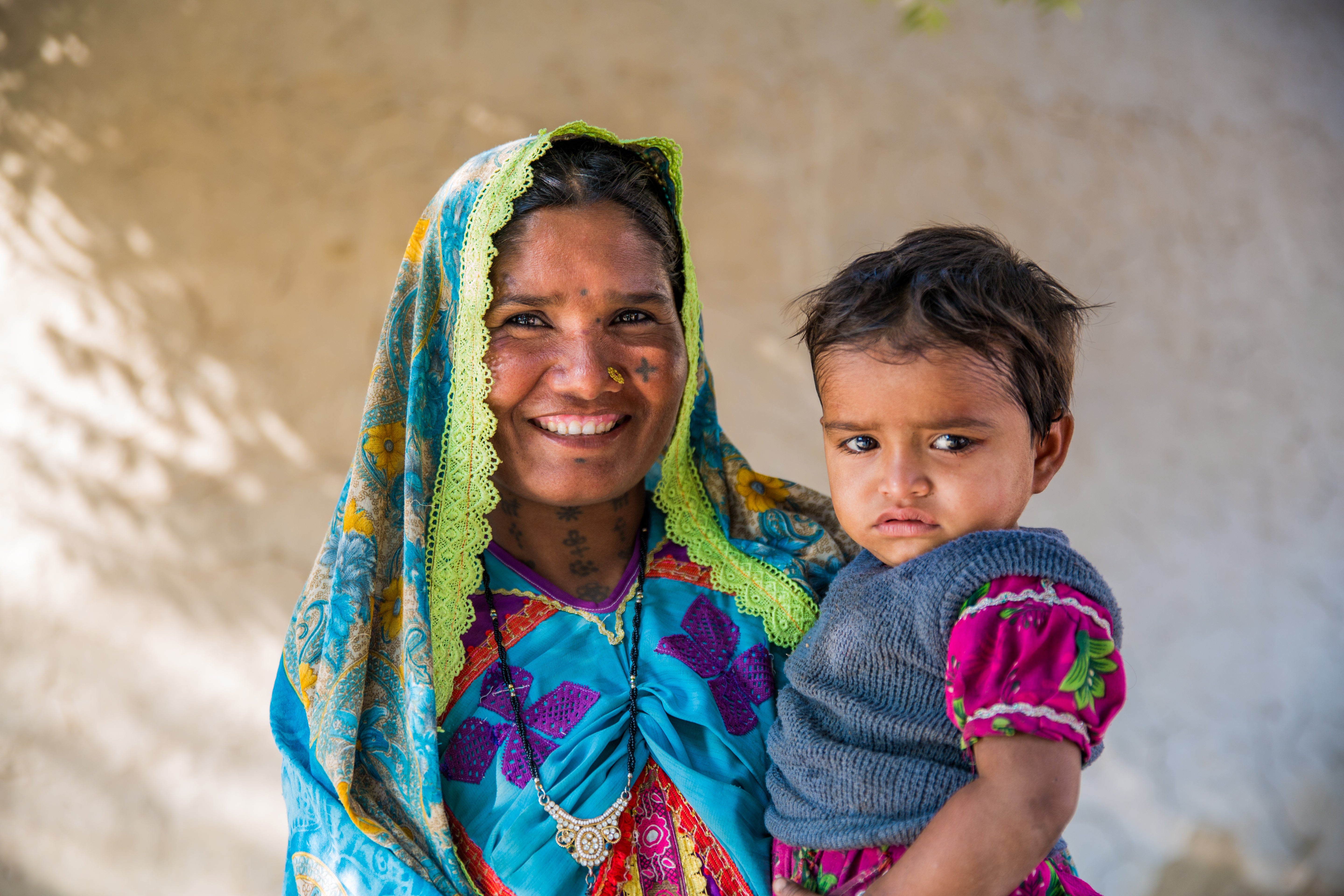Three primary factors accounted for Pakistan’s success in reducing anemia prevalence among WRA: improvements in women’s economic status, advances in nutrition, and improved access to healthcare.
Pakistan demonstrated a sustained commitment to improving household socioeconomic outcomes, most notably through the Benazir Income Support Program (BISP), an unconditional cash-transfer program designed to provide a safety net for low-income households and enable better access to basic necessities.
Improvements in women’s nutrition—particularly with regard to iron and folic acid supplementation, vitamin A intake, and enhanced dietary diversity—were also primary drivers of anemia reduction.
Pakistan increased access to healthcare for women and girls via community-based platforms, most notably the Lady Health Worker Program (LHWP).
These three factors are drawn from varied components of the Exemplars study and are the main sources of predicted improvements in hemoglobin levels according to the decomposition model. These statistical findings were triangulated with qualitative research and a review of the policies and programs that shaped Pakistan’s anemia response over the course of our 2011 to 2018 study period.
Figure 8. Oaxaca-Blinder decomposition of main sources of predicted improvements in hemoglobin concentration among non-pregnant women in Pakistan (2011–2018)
The following sections will explore each of these three primary factors in greater detail.
Improved women’s economic status via social protection programs
Pakistan demonstrated a commitment to improving the economic status of the poorest and most vulnerable populations with the BISP, a cash-transfer benefit program that Pakistan instituted in 2008.
That this antipoverty initiative would have a significant impact on anemia prevalence makes certain sense at first glance. Cash transfers have been shown to enable low-income households better access to nutritious food by increasing purchasing power. Notably, BISP demonstrated dedicated focus to the empowerment of women by providing access to National ID cards and providing BISP payments to the female head of beneficiary families, thus enhancing women’s ownership in decision making of use of cash transfers, particularly for health and nutrition services.
Interviewees in the Exemplars study were quick to identify the role of poverty in preventing women from gaining access to health care and families from consuming a proper diet. Most participants in the Exemplars study mentioned BISP and another major cash-transfer program, Ehsaas, as important government support programs to improve access to and utilization of quality nutrition and healthcare.
To be eligible for unconditional cash transfers under BISP, the program stipulated that families must earn less than 6,000 Pakistani rupees per month. The government of Pakistan rolled out a proxy means test for eligibility in 2011, and although there is still some over- and under-coverage, a recent study found that BISP targets about three-quarters of the poor, a significant improvement over previous anti-poverty programs. As of January 2019, the BISP had disbursed 564 billion Pakistani rupees (US ~$8 billion) to over 5 million beneficiary families, representing 17 percent of the population.
While BISP coverage remained low as a proportion of the total population of non-pregnant women in most provinces, a meaningful exception was the populous province of Sindh, where the nation’s largest city—Karachi, with a population of over 15 million—is located. As Table 1 below indicates, Sindh had by far the highest level of BISP coverage of any subnational jurisdiction.,
Sindh also experienced the most impressive declines in anemia prevalence of any province; the only jurisdiction of any kind that recorded a comparable rate of decline was the sparsely populated administrative territory of Gilgit-Baltistan, home to just over 1 million people.
Table 1. BISP coverage rate versus AARC of anemia prevalence among non-pregnant WRA in Pakistan, by region (2011–2018)

It should be noted, however, that although the outcomes in Sindh indicate a correlation between relatively high levels of BISP coverage and a greater level of success in reducing anemia prevalence, evidence on the causal relationship of the program cannot be conclusively made. As a cash-transfer program, BISP gives women access to resources that could be used to purchase nutritious food for their children and themselves. It is important to note, however, that the cash transfers are unconditional, so BISP does not mandate such purchases.
External analyses and reports support the role of BISP in improving women’s access to improved nutrition and essential health services. According to a 2020 evaluation report by Oxford Policy Management, 71% of recipients reported using their cash transfer to pay for food, far more than those who said they had spent it on health care (10%), clothing (8%), or education (7%). A program such as BISP, which offers nutrition counseling and support as part of its services, would seem to reinforce this tendency toward the increased income being used for food purchases.
BISP is not the only antipoverty initiative with potential relevance to the fight against anemia in Pakistan. Ehsaas, a comprehensive poverty-reduction strategy, was introduced in 2019, too recently to be included in our study. It incorporates several previously existing programs (including BISP) under a newly unified structure and seeks to address poverty through a more holistic multisectoral approach.
Two important markers of improved sociodemographic outcomes are in observed increases in the household wealth index and a rising share of households experiencing enhanced levels of food security.
The household wealth index for non-pregnant women of reproductive age (NPW) is measured on a scale of 1 to 10, where 1 represents the lowest level of household wealth and 10 indicates the highest level. Between 2011 and 2018, this index increased by a mean difference of 1.1, suggesting that, on average, households became wealthier during this period.
At a national level, food security increased by 23 percentage points during the study period, from 38% to 61%, among non-pregnant women between 2011 and 2018., A growing national consensus on the importance of such measures led to the 2008 creation of the National Food Security Task Force. In 2012, Pakistan established a National Ministry of Food Security and Research, which launched the nation’s first National Food Security Policy in 2017.
Figure 9. Improvements in women’s economic status indicators among non-pregnant women in Pakistan (2011–2018)
Improved women’s nutrition and micronutrient intake
The second primary factor was an improvement in women’s nutrition – particularly improved micronutrient intake via fortified foods and improved dietary diversity.
The rising levels of vitamin A – a nutrient needed for the formation of new red blood cells – are potentially an example of the benefits of food fortification, a policy Pakistan has pursued in a variety of ways to help address malnutrition. Vitamin A fortification of oil and ghee has been mandatory since 1965. With 85% of cooking oil in the country industrially processed, the coverage rate for this intervention is likely quite high.
Nutrient fortification has been a mainstay of Pakistan’s overall food security policy. In 2003, the Ministry of National Health Services, Regulations and Coordination established the National Fortification Alliance to provide a forum for public and private partners throughout the country to discuss and advance fortification initiatives.
Pakistan’s national government has collaborated actively with multinational and philanthropic bodies to accelerate progress on fortification. In 2010, the nutrition office of the Ministry of National Health Services, Regulations and Coordination entered a partnership with the nonprofits Global Alliance for Improved Nutrition and the Micronutrient Initiative (since renamed Nutrition International) to bolster research, policymaking, and compliance measures related to food fortification.
In 2011, the national government teamed with the United Nations Food and Agricultural Organization to form the Pakistan Integrated Nutrition Strategy to develop a framework for guiding the provinces in the creation of their own nutritional agendas, including fortification as well as nutrition education and the treatment of acute malnutrition.
By the end of the Exemplars study period in 2018, Pakistan had begun a pilot program to fortify wheat flour with iron (the main component of the hemoglobin molecule) and folic acid, which are needed for the formation of red blood cells. The coverage of fortification of such essential food items as bread, cooking oil, and ghee has improved, though there is still room for improvement in consistency and compliance.
As the below figure indicates, the proportion of non-pregnant women consuming these fortified food items more than doubled over the course of the study period.
Figure 10. Consumption of fortified foods among non-pregnant women in Pakistan (2011–2018)

Another area of meaningful nutritional improvement is an increase in dietary diversity – with greater progress observed in those living in urban areas. One reason why the nation’s urban residents tend to have slightly more diverse diets than their rural counterparts is their higher level of access to a variety of foods, along with improved access to key enabling factors such as education, and public information about food and nutrition.
Figure 11. Consumption of diverse diets among non-pregnant women in Pakistan, by area of residence (2011–2018)

While progress has been made in dietary diversity, further progress must be made as a majority of WRA in Pakistan still do not have consistent access to diverse diets. Several Exemplars study interviewees across urban and rural residence noted that, in Pakistan, barriers still exist in terms of awareness of what constitutes a truly healthy diet and affordability of nutritious and diverse diets. According to the WHO, the basic principles of a healthy diet include a diverse diet consisting of fruit, vegetables, legumes, nuts, and whole grains; the exact make-up of a diversified, balanced and healthy diet varies on individual characteristics, cultural context, locally available foods and dietary customs. Even among Pakistanis who have the money to buy varied and wholesome foods, this unawareness is a serious barrier to nutritional health.

Like many other nations, Pakistan has sought to address the behavior gap by sending community health workers into rural villages and agricultural areas. A wide range of interviewees noted the important role of lady health workers (LHWs) in providing nutrition education, counseling and support in these parts of the country.
The LHWP, which Pakistan inaugurated in 1993, is the main implementing agent for a range of nutrition programs, including nutrition screening, counseling, and iron and folic acid supplementation, which will be discussed in greater detail in the next section.
Improved access to and use of health services
The last of the three primary factors in Pakistan’s reduction of anemia prevalence is the increased use of the health care system, measured in terms of the availability of services, particularly for women and girls.
Some of the decline in anemia prevalence is statistically attributed to a range of health care services, including sessions with community health workers and consumption of iron and folic acid supplements.

A major component of Pakistan’s increased access to health care is the development of community health interventions—notably, the LHWP. As discussed above, the LHWP has played a major role in connecting towns and villages to health services.
“The Lady Health Worker [Program] is one of the biggest interventions [that has proven to be] a bridge between [the] community and [the] health system,” said one Exemplars study respondent.
In particular, Exemplars study interviewees indicated that LHWs represented the most important means for iron and folic acid supplementation to reach women in their communities as the LHW commonly distribute the supplement door to door.

Community health services, nutritional supplementation, and expanded access to health facilities also are being provided at the local and subnational levels, which have taken on added importance with the decentralization of health care in Pakistan.
When looking at all regions of Pakistan, national experts in the Exemplars study noted that only Punjab truly has comprehensive multisectoral approaches and nutritional strategies, although coverage remained variable with large regional differences. There, a high level of political advocacy and continued focus on program implementation have helped integrate nutrition within health care delivery. Khyber Pakhtunkhwa was noted as being a particularly challenging jurisdiction due to its mountainous terrain and difficult security situation. Yet, national stakeholders in the Exemplars study did cite that the health system in Khyber Pakhtunkhwa has recently improved, specifically in terms of infrastructure and quality of services.
Family planning
Pakistan has embarked on a series of national and subnational initiatives to improve family planning outcomes. In 1994, the federal government introduced the National Program for Family Planning and Primary Health Care, which dispatched LHWs to provide family planning information along with other forms of basic health care and education. In 2017, Punjab, the nation’s most populous province, initiated its Population Welfare Program, which sought to increase the use of contraceptives and other family planning services.
Programs such as these contribute to anemia reduction mainly through reductions in birth parity (the number of pregnancies of at least 24 weeks, regardless of whether those pregnancies result in the delivery of a live birth) and increases in birth intervals (the amount of time separating a mother’s consecutive deliveries).
The relevance of this for anemia reduction is that pregnancy and childbirth place enormous demands on the body, including increased need of the nutrients, particularly iron, required to generate enough maternal and fetal red blood cells and to favor in utero child growth and development. Consequently, repeated pregnancies—and births at intervals less than the WHO recommended minimum of 33 to 36 months—can exacerbate nutritional deficiencies such as anemia.
As such, counseling for family planning is an important lever to reduce unwanted and at-risk pregnancies that might place the mother at heightened risk of anemia; such pregnancies might occur when the mother is very young, relatively old, or suffering from a prior medical condition that renders her vulnerable to excessive blood loss, iron deficiency, or other problems.
As the figure below illustrates, parity and deliveries both declined in Pakistan during the study period, though they remained moderately high by global standards.
Figure 12. Family planning outcomes among women of reproductive age in Pakistan (2011–2018)

However, the story of family planning in Pakistan during the study period was largely about further opportunities to improve. The use of contraceptives declined slightly (see Figure 12 below), preventing family planning from being a more significant factor in Pakistan.
Despite this, quantitative research across three of the four Anemia exemplar countries still shows that access to modern contraceptive methods had one of the largest effect sizes, contributing to 11% - 17% of anemia reduction among WRA in the respective countries. This indicates a potentially significant untapped source of further progress against anemia.
Figure 13. Prevalence of family planning methods and services among non-pregnant women in Pakistan (2011–2018)

Programs are already in place that could enable Pakistan to increase contraceptive usage, particularly in rural areas, where the introduction of family planning techniques has proven especially challenging. The LHWP, for example, provides information on family planning along with other basic health services.
Targeted pilots in Punjab revealed that coordinated education campaigns by doctors and LHWs not only can make contraceptive methods more accessible, but also help address some of the stigmas and misperceptions that have long discouraged contraceptive use.

In addition to being Pakistan’s most populous province, Punjab is perhaps its most varied, comprising some of Pakistan’s biggest cities—including Lahore, Faisalabad, and Rawalpindi—as well as vast rural areas and fertile farmland. The Rahnuma-Family Planning Association of Pakistan has worked in the province to increase the uptake of contraception, reduce the population growth rate, and increase family planning services.
Founded in 1953 as the Family Planning Association of Pakistan, this nonprofit has evolved to become the largest provider of sexual and reproductive health services in the country. Through an innovative “social franchising” model, it has partnered with smaller private organizations nationwide to expand its reach and further improve the coverage of essential family planning services in a nation where social traditionalism has historically limited their spread.
“Recently a program came here called Rahnuma—a family planning program that addressed repetitive pregnancies due to the lack of awareness on contraceptive methods,” one Exemplars study interviewee explained. “Now they have built an institute, which is an extremely good one. These people provide education along with contraceptives.”
